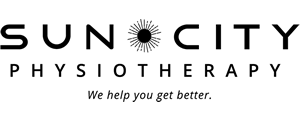Complete Concussion Management
Complete Concussion Management
What is a Concussion?
A concussion is a mild form of brain injury that results from acceleration or deceleration of the brain within the skull following a significant impact to the head or body. Concussions can be the result of a direct blow to the head, or of indirect forces causing quick movement of the head or neck. A concussion may occur with or without a loss of consciousness, and cannot be detected with imaging techniques such as a CT Scan or MRI.
Most concussion symptoms will resolve within 7-10 days, even though the full physiological effects of a concussion can last up to 30 days. For some, however, symptoms do not resolve within 7-10 days. In this scenario, the symptoms may be generated from multiple sources such as the neck, or the visual or vestibular systems. Symptoms may also be based on level of exertion. When symptoms persist beyond the 7-10 days, they may indicate Post Concussion Syndrome.
It is recommended that individuals who suffer a concussion undergo a full assessment in the early stages of their concussion, as a stepwise return to activity can help to prevent prolonged symptoms and suffering.
What are Common Symptoms of a Concussion?
Physical – headache, lightheadedness, dizziness, nausea, fatigue, changes in sleep patterns, changes in vision, sensitivity to light and noise.
- Cognitive – reduced concentration, memory problems, feeling mentally foggy.
- Emotional – irritability, anxiousness, depression, feeling more emotional than usual.
What sets CCMI Apart when it comes to Concussion Rehabilitation?
Baseline testing – The measures taken in an assessment following a concussion are most accurate when they can be compared against the same measures taken before your injury. This helps to most accurately determine the effects of your concussion, when you are fully recovered, and when it is safe to return to sport. CCMI uses a multi faceted baseline test which ensures that the many areas affected by concussion are accurately assessed. A series of physical and cognitive tests are performed at the beginning of the season and following an injury to determine whether a concussion has occurred, and the level and areas of impact. Once these areas can be identified, rehabilitation is focused where it is needed. Concussion symptoms often disappear days to weeks before the brain has recovered. Having valuable baseline information may help practitioners to make safer return to play decisions.
An integrated approach to rehabilitation – Following a short period of rest, the International Consensus Statement on Concussion in Sport (2016) recommends a gradual increase in mental and physical activity by a licensed healthcare practitioner trained in concussion management. CCMI concussion treatment includes: balance, exercise, and visual rehabilitation, manual therapy, nutritional interventions, and a gradual return to school, work, and sport.
The CCMI Concussion Tracker Smartphone Application for coaches, teachers, and athletes – The CCMI Concussion Tracker app supports safer return-to-sport decisions for young athletes. It captures and shares an athletes’ concussion status in real time. Where a concussion hits, Concussion Tracker enables the coach and athlete to:
- Report and track concussion
- Conduct sideline assessments
- Record athlete’s recovery status and timeline
- Scan and share medical documents if needed
- Track daily symptoms for recovery progress
- Store and view pre-season concussion test results
Lindsay Wourms is a certified CCMI physiotherapist.
Contact us to start your concussion recovery today!
Call 250-861-8056

Lindsay grew up in Kamloops, BC where she competed for many years as an artistic gymnast. She got to know the physiotherapy profession very well in that time, and decided to pursue her passion for rehabilitation with a career in physiotherapy. She graduated from the University of Alberta in 2017 with a Masters of Science in Physical Therapy and worked in Edmonton before moving back home to BC.
Lindsay has experience treating clients of all ages and backgrounds, whether their injuries be from a motor vehicle accident, work-related, or athletic. She has a strong interest and experience in treating gymnasts, dancers, and baseball players. She approaches the treatment and management of all conditions with a focus on understanding client goals, developing individualized rehabilitation plans, and providing education, open communication, and hands on treatment.

